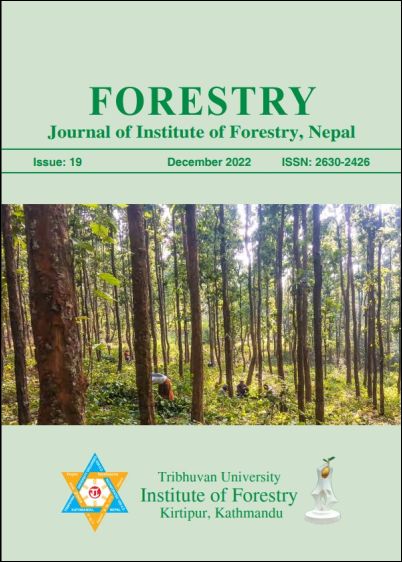Status of springs in the mid-hills of Khotang district Nepal, (A case study from Diktel Rupakot Majhuwagadhi and Halesi Tuwachung Municipality)
DOI:
https://doi.org/10.3126/forestry.v19i01.55702Keywords:
Climate change, Springs, Watersheds, DischargeAbstract
The study was conducted in Buipa (ward no.14) of Diktel Rupakot Majhuwagadhi municipality and Durchim (ward no.5) of Halesi Tuwachung municipality in Khotang district, Nepal. A total of 45 springs were mapped. The study showed 62.2% of the springs to be open springs, and the rest were modified into concrete structures. Seventy-seven percent of the springs were found to be drying up. The study showed 20% of the springs had dried up already and 17.7% were on the verge of drying. Most of the springs found were depression springs. At Durchim of Halesi Tuwachung, 16 out of 18 springs had discharge rates less than 0.05 l/s. Twelve of these had dried already. Thirty-seven per cent of the springs were located farther than 1km, of which 6.67% were also in a drying condition and more than 51% were farther than 500m. People used springs on various occasions and local festivals. Forty per cent of springs were drying due to landslides and road construction. In the Koshi basin, 78% of annual rainfall occurred during the monsoon and only 2.8% during the dry period. Springs are fully monsoon-dependent and slight fluctuation in the rainfall patterns could greatly affect the discharge in the springs
Downloads
Downloads
Published
How to Cite
Issue
Section
License
© Tribhuvan University, Institute of Forestry




